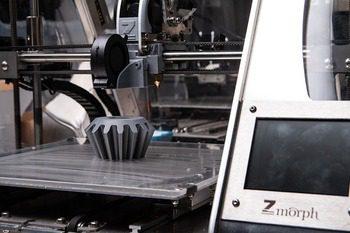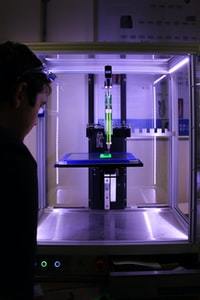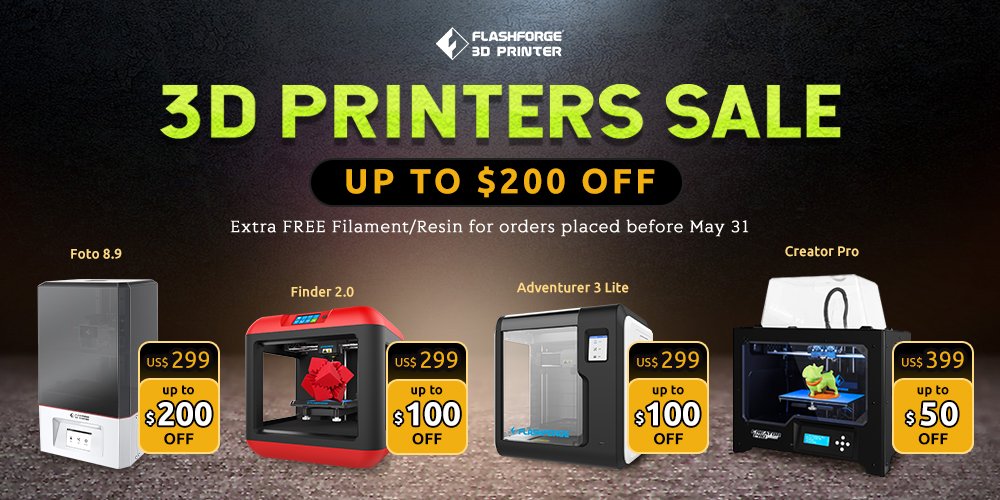DSP, or direct sound printing, is a reasonable shift in 3D printing. 3D printing is making three-dimensional solid objects from a digital file. A 3D-printed object is created using additive processes, whereby successive layers of material are laid down in different shapes. Direct sound printing (DSP) is a new 3D printing technology that uses sound waves to create three-dimensional objects.

3D printing makes Three-dimensional Solid Objects Using Additive Processes
Additive manufacturing, commonly known as 3D printing, makes three-dimensional solid objects from a digital file. Direct sound printing technology has the potential to change the game when it comes to 3D printing. This new technique could allow businesses and individuals to produce customized products on demand without expensive molds or tooling.
In DSP, Sound Waves are Used to Create Three-dimensional Objects
It’s official: 3D printing just got a whole lot more relaxed. With direct sound printing (DSP), objects can be created using sound waves, meaning that the technology is now closer than ever to becoming a mainstream manufacturing method. How does it work?
DSP works by focusing sound waves into a highly concentrated beam. This beam is then directed at a photosensitive resin, which hardens when exposed to sonic vibrations. By carefully controlling the direction and intensity of the sound waves, complex three-dimensional shapes can be built up layer by layer until the object is complete.
It’s still a long way from the instant 3D printing of sci-fi movies, but this is an exciting development. Cisco has worked hard on its software-defined networking (SDN) and cloud-based networking technologies. It unveiled the Cisco Catalyst SDN-Cloud for Enterprises solution to bring the same virtualization used in data centers to enterprise networks.
The researchers demonstrated the use of DSP by creating a replica of a famous wind-up robot from the future, a character from the television series ‘The Jetsons.’ The result is a 3D shape that looks like what would happen if you took a robot and compressed it into a cube. The researchers could also print out a more traditionally shaped robot using DSP.
 DSP is Not a New Technology
DSP is Not a New Technology
— it’s been around for decades. The technique is similar to a 3D printer, but the waves move in a layer-by-layer fashion instead of ink to build up your desired object. A result is an object itself, built directly from sound waves.
It is helpful in many applications, such as the medical field. The sound waves could be used to grow organs in a lab setting, which would then be transplanted with minimal risk of rejection.
The researchers say the resulting objects are more challenging than their conventional counterparts. One major cause of failure with regular 3D printing is that the masses of the objects created mean that forces acting on them can cause them to bend and break.
DSP eliminates this problem, making equally strong objects in all directions. The DSP process also does not require an external energy source. The sound waves are generated by a computer, meaning that the printer is self-powered and requires no external hardware.
The research team also suggests that sound waves, such as smartphones, could be generated directly by the object to be digitized. Ijspeert and his colleagues have published their work in the peer-reviewed journal ACM Transactions on Graphics, Vol. 34, No. 6, August 6. The technology has the potential to be used in a wide variety of applications where the ability to record and visualize sound waves is crucial.
DSP Printing Has Been Around A While
“DSP is something we’ve been working on for some time, and we’re excited to see the impact it can have,” said Gary Radburn, CEO of MicroDose Technologies, which developed the technology. “This low-cost method enables the mass customization of hearing aids and earbuds and paves the way for new and exciting advancements in the medical and hearing aid fields.
But perhaps the most exciting prospect is the material from which the DSPs are made. Up until now, researchers have predominantly been working with hydrogel. The team at Columbia University has developed a highly conductive hydrogel, which they have used to create their DSPs. But the hydrogel is a mesh of hydrophilic polymer strands held together by ionic bonds.
DSP Printing Using Sound Waves
While the particular media the team worked with does have the advantage, DSP could theoretically use it with other materials such as plastics or metals. The device could even print something like an iPhone or laptop in an acoustic circuit. Starting with a minimalistic, pared-down design, de Mello and his team have developed a technology that could be used to fabricate circuit boards, antennas, and other electronics. The DSP can be turned into a select frequency that can be used to create sound waves. The sound waves then press the PLA against a surface to form the desired pattern. PLA is a strong, recyclable thermoplastic used in 3D printing. It melts and cools at relatively low temperatures compared to other plastics and is safe to handle.
The music transmission is done by a specialized piece of hardware that encodes the music file, breaks it into real-time, and delivers the DSP commands to drive the DSP. The DSP has been developed and prototyped for the Stratasys Connex printer and will be released as open-source, with a target launch date of Fall 2020. The printer’s 3D imaging and acoustic wave technologies have been combined and made available to the general public. A quote from the press release; The printer is the first to combine acoustic wave printing and 3D imaging, allowing designers and hobbyists to 3D print PLA objects in a non-contact manner.
It’s also strong enough to be used in 3D printing and is biodegradable. The researchers tuned the sound waves to squeeze PLA to create a pattern on a surface. Earlier attempts at such a technique involved forcing the PLA in a particular direction. The McGill researchers’ approach works oppositely, making it unique. The McGill researchers used the technology to print out several shapes, including butterflies and trees. The original system developed by MIT researchers and the new reduced-cost DSP can form holes, ridges, and other patterns on the surface of a 3D-printed object. The DSP uses an inkjet printer and a reservoir of PLA, whereas the MIT system uses a filament cartridge and a nozzle. It is also non-toxic.
DSP Printing is Used Professionally
The 3D printer is designed to be used by a skilled operator and is not yet suitable for home use, but the team plans to make the devices smaller and more user-friendly in a future iteration. The printer could create custom parts for drones and other remote sensors or 3D-printed parts to repair everyday devices.
3D printing could allow people to print custom parts, such as cases. These customized parts could be used to improve or make new devices personal to the user. Although the NVIDA Jetson is nice and compact, it is still a bit larger than the previous iteration of the Jetson. The design team added two USB Type-C ports to make this Jetson an all-in-one solution.
In the future, the team stated people could use the printer to create other 3D materials besides graphene-based plastics. And the team isn’t done yet. The group says the 3D printer could become smaller, more user-friendly, and mobile in future iterations.
Source: 3D Printed Graphene
But the main challenge is a cost beyond the technical difficulties of creating a more user-friendly device. To reduce the cost of printing, the team is evaluating different printing materials, such as carbon fiber.
And the team is exploring whether they can take advantage of existing industrial processes to create large-scale parts. For example, could the team print small parts that would later be assembled into more significant parts elsewhere?
Sam Cook, a software engineer on the Media team at Apple. Is excited to share with you some of the work we’ve been doing on the MediaKit framework, which is used to discover and control media playback in iOS, watchOS, and tvOS. In iOS14, we introduced media content available only in the US, like the PBS and TED channels.”
We can add electronics to the parts that are printed. So in the future, you could go up to the print station, and it could test the part that has been printed and then add electronics to it,” states Cohen. “You could then pick up the part, attach it to a drone, and fly it rather than wait for it to be delivered by a traditional supply chain.” The printer should also be easier to operate and use than existing 3D printers, states Cohen.
Can You Help?
We don’t want to offend you, but we’re reaching out and asking for your help in leaving us a review. It’s easy to do and only takes a few minutes. We appreciate your feedback and want to ensure your voice is heard. Thank you!
We only ask for reviews from all customers to improve our services.
Don’t you agree that reading reviews of a business’s services or products helps you make an informed decision?
Bullwinkle
Hello,
As an eCommerce seller, the first physical touchpoint you’ll have with a customer is when your package arrives at their door, an impactful impression is critical.
Fulfillment marketing, a cutting-edge solution crafted by my friends over at The Fulfillment Lab, is designed to make the unboxing experience memorable by bringing marketing and fulfillment together at scale!
With this strategy, you can create a unique order fulfillment experience using data you’re already capturing—without sacrificing speed or scalability. It makes it possible to:
- Build brand recognition. With increasing competition for eCommerce businesses, you need a way to differentiate and build brand recognition. Fulfillment marketing is that solution!
- Tailor the customer experience. Personalize the fulfillment experience to each buyer using marketing data you’re already collecting—delivering a unique customer experience that’ll leave a lasting impression.
- Create brand advocates. Turn one-time buyers into repeat buyers and loyal advocates for your brand. You make it easier to attract new customers driving additional revenue from repeat sales while expanding your new customer base.
I figured you’d like to do this in your organization, so I’m connecting you with The Fulfillment Lab! Click this link [HERE] to get started with their fulfillment services today, or contact them directly if you have more questions.
The Fulfillment Lab, 5136 W Clifton St, Tampa, FL 33634, (813) 444-3455




